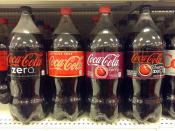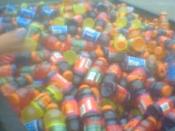In the intensely competitive business of carbonated drinks, two powerhouses are finding themselves in a world where their products are losing their fizz. Coca-Cola and PepsiCo have enjoyed phenomenal profits on their main events for years, but are now finding that growth opportunities are elsewhere in the beverage industry. The status of the two soda makers is not good enough anymore, with negative sales growth for these companies carbonated drinks segments. Both have begun the process of investing in a more diverse product line, but PepsiCo has largely beaten Coca-Cola to the punch. While Coke has largely tried to stay the course, PepsiCo is "defining its mission as serving the customer rather than protecting its venerable brands, and is hoping to stave off a stagnant middle age." It is clear that changes must be made in the strategies of both these companies, but with Pepsi already so far ahead in the emerging markets of non-carbonated drinks, Coke may go flat long before its competitor.
Before we jump into the details about consumer preferences and how they are now affecting sales of drinks, we should consider for a moment how Pepsi managed to snatch up many of the large-growth beverages while Coke sat idly by not giving them a chance. To try and narrow down this argument, we will concentrate on Sports Drinks, Pepsi's Gatorade and Coke's PowerAde. Why the huge disparity in sales? Pepsi's Gatorade dominates the market. History has much to do with it. Gatorade was first produced for the 2007 National Champions, University of Florida Gators (hence Gatorade) in 1965 when coaches wanted a way to keep their players from dehydrating under the intense Florida sun. With the success of Gatorade for College Football, it spread for the most part unchallenged to become the official sports drink...


